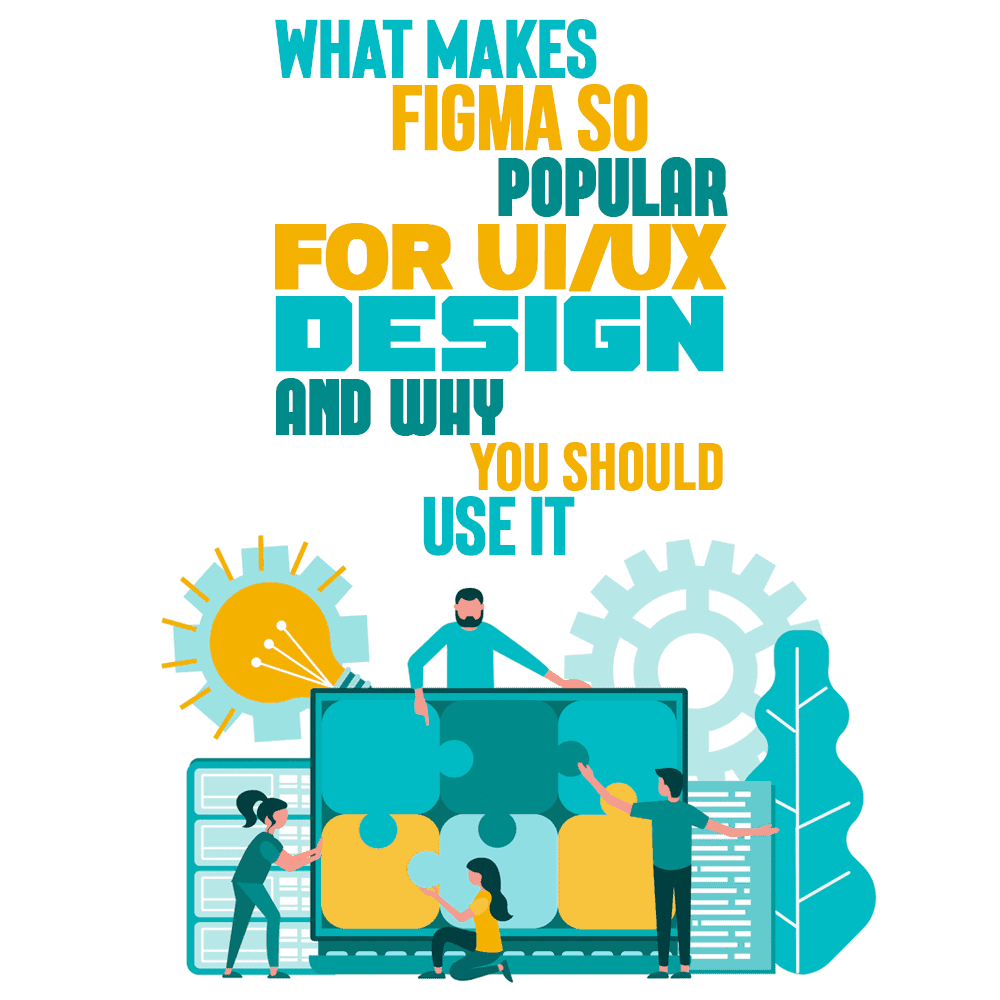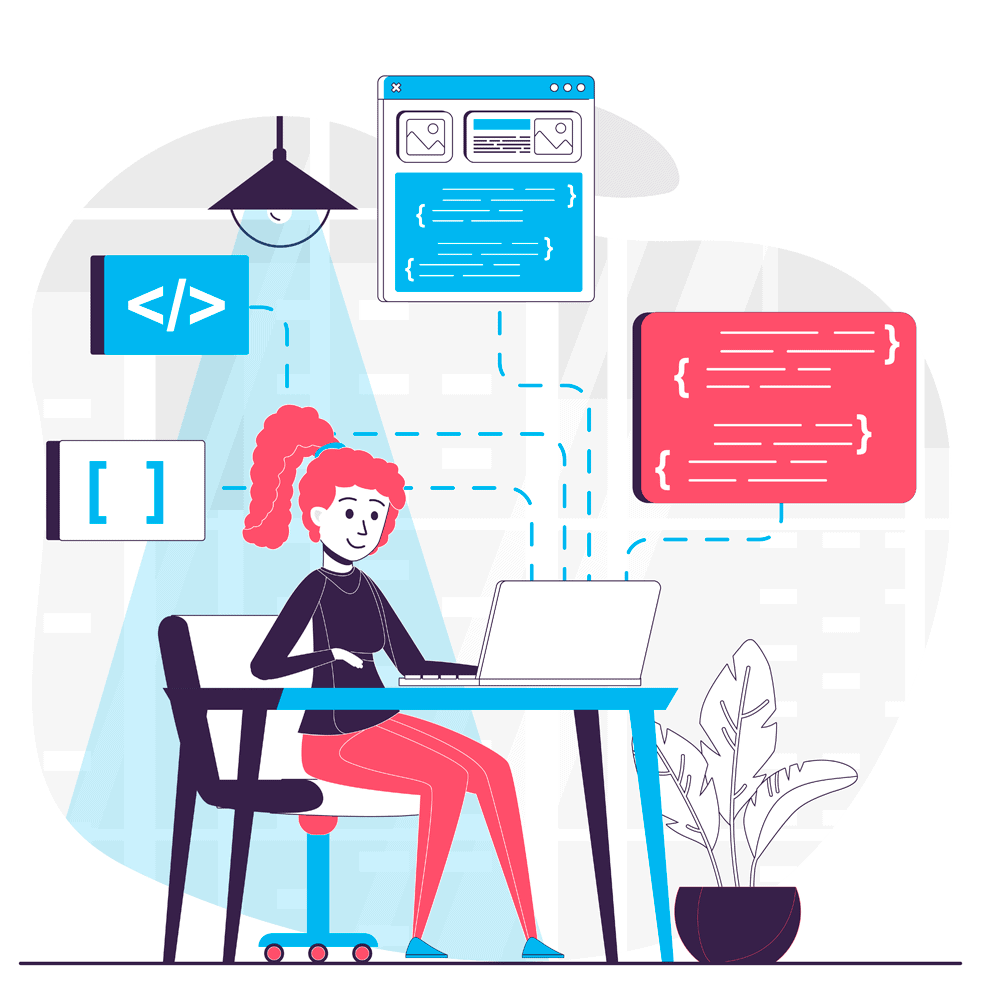 In September 2016, a long-awaited dream of two brilliant minds, Dylan Field and Evan Wallace, came true when the design tool Figma was released.
In September 2016, a long-awaited dream of two brilliant minds, Dylan Field and Evan Wallace, came true when the design tool Figma was released.
Figma was an exception among the tools that ruled the design space at that time. With collaboration as its keystone, it was effectively paving a new path in what has traditionally been an offline, single-player arena. And today, five years later, Figma has become the first choice of most design teams to carry out their design process.
There is no doubt that Figma is a tool with mighty potential. It has capabilities that support a design process from beginning to end. In the words of Dylan Field, the co-founder of Figma, “Design is undergoing a monumental shift—going from when design was at the very end of the product cycle where people would just make things prettier, to now where it runs through the entire process.”
Figma has been developed with this foresight. As the design undergoes a shift, the design tools must too—and Figma is spearheading the move!
So, what makes Figma such a promising design tool? What are the unique features that Figma brings to the table? Let’s explore more of that in this article. This way, you will get a comprehensive understanding of the latest developments in the design tool arena and know if you are missing out on anything major. And maybe, by the end of the article, I will have you convinced to give Figma a try.
Figma: The Mighty Design Tool
When Figma was launched, a feature that raised many eyebrows and gained appreciation equally was that it is web-based.
Traditionally, all design tools were desktop applications that had to be downloaded and installed to be used. They also had several dependencies on the platforms in which they ran. It was into this environment that the browser-based Figma made its entry.
Any operating system—Mac, Windows, or Linux—could run Figma if they had a web browser. No downloads or installs were needed, and this was the backbone of Figma’s collaboration feature.
Today, Figma has a web app and a mobile app (in beta). It has several amazing resources, features, and plugins that help to make the design process smoother. It combines the accessibility of the web and the efficiency of apps to bring out a tool unlike any other.
From brainstorming to creating the wireframe, prototype, and final design; and from collaboration to feedback collection and developer handoff, Figma extends its support throughout the entire process.
Let’s take a closer look at some of the key aspects of Figma that make it the best tool, from strategy to design.
Quick Collaboration
It wouldn't be right to start a discussion on Figma without talking about its collaborative capabilities first. After all, Figma is built for collaboration.
Right after you create an account, you get to set up your team and have them on board. You can invite other designers, stakeholders, or developers to join the team and give them relevant access permissions (i.e., editor, viewer, or owner). And what's more, sharing can be done on a team level, project level, or even file level.
And what does it take to share? Nothing more than just sharing a link. The collaborators can dive in by clicking on the link and take action according to their role. It's easy to track who's doing what as the name of whoever is working on the Figma design is shown on the top. Gathering feedback and making revisions is easily achieved with the comment feature.
Some design teams find the real-time collaboration support tremendously beneficial while working remotely or presenting designs.
Simplified Iteration
A UX design process involves multiple iterations before a final design is confirmed. The designer creates sketches, wireframes, and prototypes, each of which is reviewed by the concerned parties and goes through loops of iterations as required.
Before Figma was introduced, multiple tools were required to carry out the individual processes like wireframing, prototyping, and reviewing. What this meant was a series of files being sent back and forth. This made the iteration cycle complex, confusing, and time-consuming.
Figma allowed the design team to bypass this complicated process. Everything—from sketch to review—could be done from within Figma, removing the need for third-party tools or the exchange of hundreds of files. Iterations could be completed quickly and efficiently with a single platform satisfying all the necessary requirements.
Easy Prototyping and Testing

Additionally, once you have completed building the prototype, you can distribute it for user testing by sharing the prototype link. The testers can review and leave their comments within the prototype if required. Further, testing on mobile devices is also quite efficient, with the prototype being surrounded by the actual device model. The Figma Mirror app also allows more realistic and drive-specific testing.
Organized Designing
A noteworthy feature of Figma is that it lets designers create component libraries to organize their design. Components, text style, font, and effect, can create a library that is available for use in other Figma files as well.
Moreover, whenever a change is made to any element in the library, it reflects on all files that use the element. While designing for large organizations and enterprise UX, this is very beneficial and can help to keep designs updated without errors.
Swift Developer Handoff
Traditionally, designers and developers use a separate tool to facilitate the handoff. But with Figma, that is not required. Instead, developers can switch to code mode with a single click on the design file. When in code mode, selecting any element will give all details required for the implementation of that element in code. So, it's a win for both developers and designers!
Design as a Team Like Never Before
Choosing a design tool is a personal preference for every designer. While one designer may like a specific feature in one tool, another may prefer the approach of a different tool. However, when you are working on a design as a team with an aim to provide the best user experience, it's important that the design tool upholds teamwork. And therein lies the power of Figma.
Figma is advanced, capable and tackles several issues that designers have been facing for years. The creators of Figma understood designers and their needs and wanted to develop a platform that supports them in their every role—from ideation to production.
In the five years of its existence, Figma has succeeded in making design simple and accessible. The future would witness it scale more heights and bring more people to embrace design.
